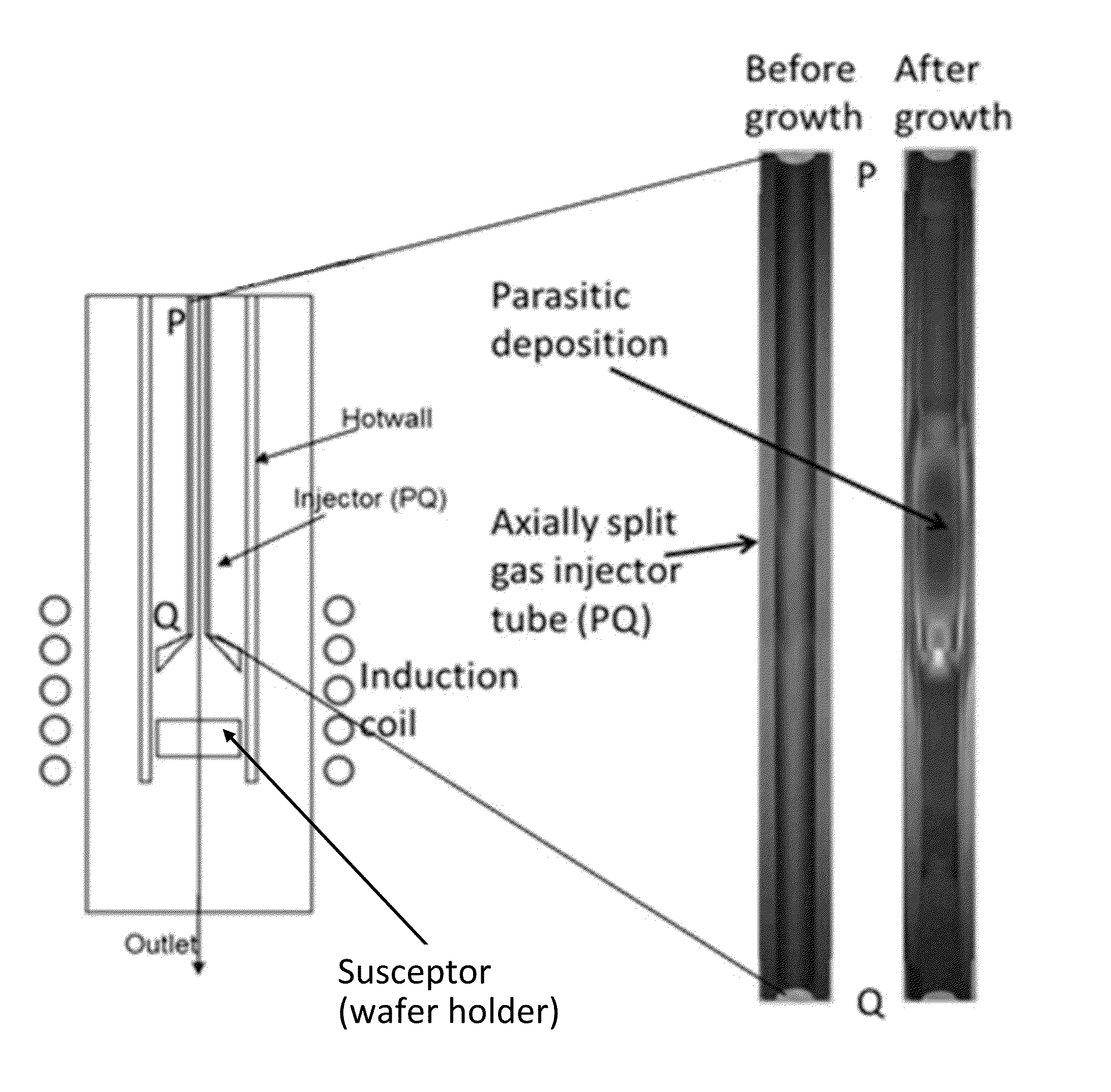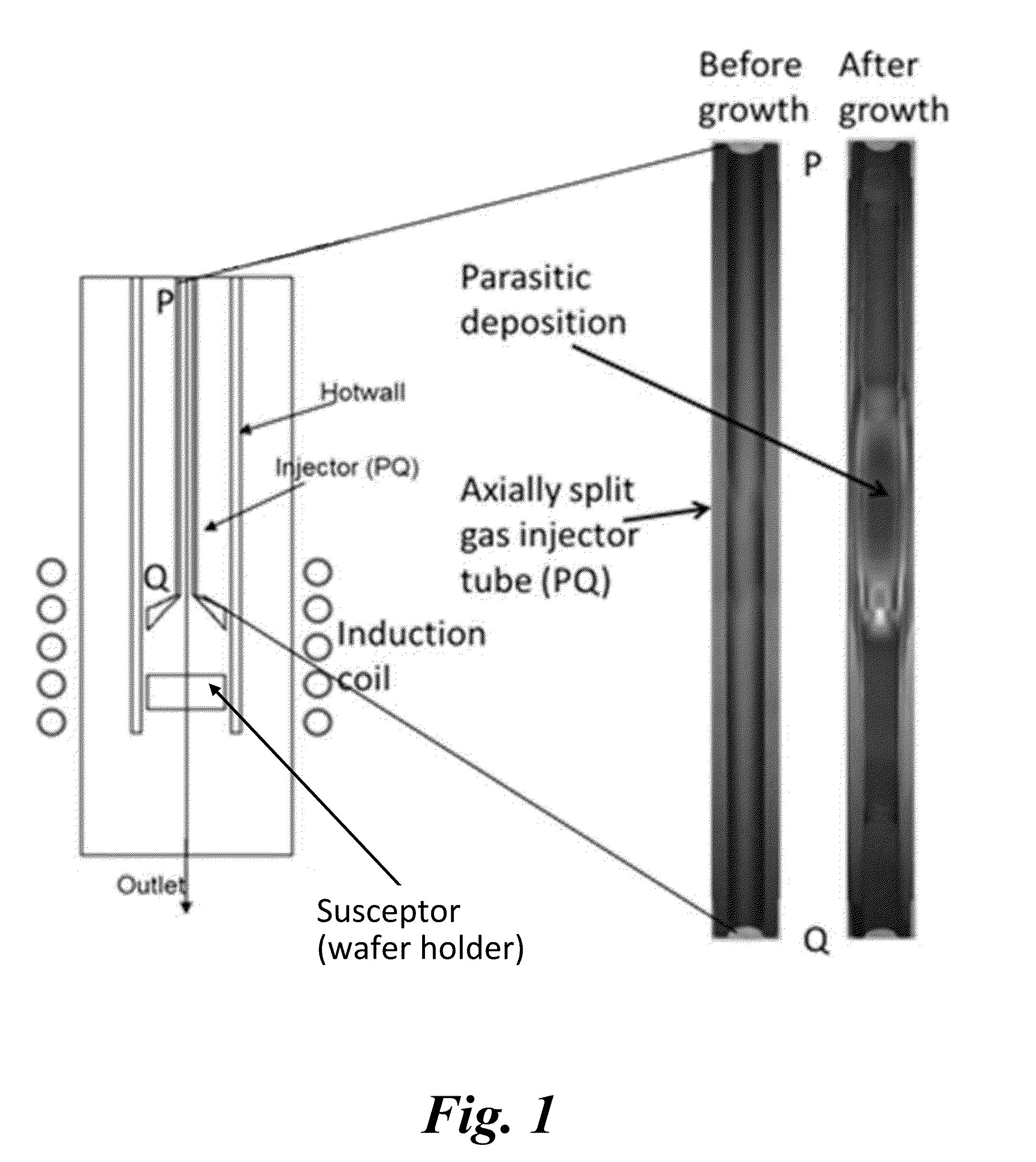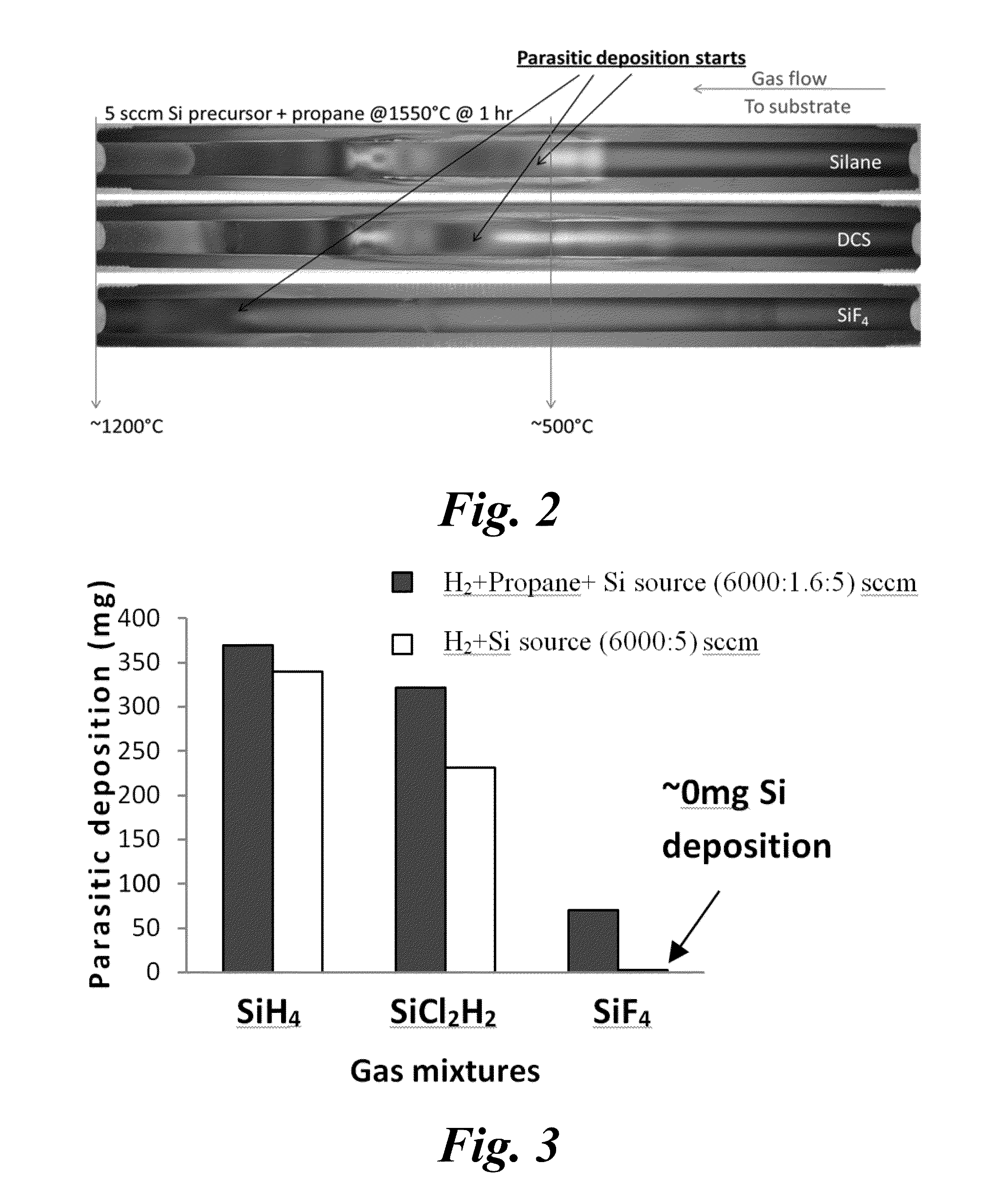Pretreatment Method for Reduction and/or Elimination of Basal Plane Dislocations Close to Epilayer/Substrate Interface in Growth of SiC Epitaxial
a technology of epilayer and substrate, applied in the direction of crystal growth process, polycrystalline material growth, chemically reactive gas, etc., can solve the problems of reducing the practicability of the substrate etching method, reducing the defect-free region of the substrate, and reducing the device performance. , to achieve the effect of high
- Summary
- Abstract
- Description
- Claims
- Application Information
AI Technical Summary
Benefits of technology
Problems solved by technology
Method used
Image
Examples
example 1
[0094]Experiments were conducted in a hot wall CVD reactor. Silicon tetrafluoride (SiF4) was used as the gas precursor for silicon source as well as conventional gases (silane and dichlorosilane) for comparisons. Propane gas was used as the carbon source, whereas hydrogen gas was used as the carrier gas. Growth temperature was kept at 1550° C. and the reactor pressure was kept fixed at 300 Torr. The C / Si ratio was maintained at 1. Commercially available 4H—SiC (Si face, 8° or 4° off cut towards [11 20] direction) substrates were used, without any surface pretreatment.
[0095]A novel gas delivery tube system (gas injector) was used to visualize the parasitic deposition in the gas delivery tube. This design was an effective tool to identify the location at which gases start decomposing in the injector tube by the observation of parasitic depositions. In this scheme, the gas delivery tube is axially split into two halves, which can be assembled together for epitaxial gr...
example 2
Substrate Surface Pretreatment
[0105]The substrate was commercially obtained 4H—SiC wafer with 8° off-axis towards [11 20] direction with the Si-face chemical mechanical polished. The substrates were treated by molten KOH-related mixture of (e.g., KOH—NaOH—MgO at 35:50:15 wt %) for different durations (2-45 min). Epitaxial growth was carried out in a home-built chimney CVD reactor at 1550° C. and 80 Torr, using propane and dichlorosilane as precursors. The doping of the epilayer is ˜1×1015 cm−3 n-type was controlled by C / Si ratio. After growth, all the samples were etched by the same etchant to delineate the defects on the epilayers.
TABLE 2Sample pretreatment condition and defect densityon the epilayers grown on 8° SiC substrates a.SubstrateEpilayerSampletreatmentEtch pit sizethicknessBPD density on theNo.durationon the substrate(μm)epilayer (cm−2)1No—61832No—61503No—62324 2 minInvisible b620512 minμm611625 min~1.5μm622745 min~4μm615 8 c 2 minInvisible b0.519a Typical BPD density on...
example 3
[0111]A fluorinated silicon precursor, silicon tetrafluoride (SiF4), was employed in SiC CVD growth to investigate the pretreatment method. The substrates are cut from a 4° off-axis 4H—SiC wafer and epitaxial growth (˜4 μm) is first carried out without any pretreatment and a surprisingly low BPD density was observed (5 cm−2) compared to the other growth method mentioned in Table 2 (sample 1, 2 and 3) using DCS as the Si precursor. Later in other experiments the surface was treated by the molten KOH-related mixture for 2 min. Epitaxial growth was then carried out using the novel SiF4 precursor described earlier on the pretreated substrate. The grown epilayer was completely BPD free, indicating that 100% BPD conversion was achieved (Table 4) at the initial stage of epigrowth (i.e., very close to the epilayer / substrate interface). This accomplishment of 100% substrate BPD conversion was accomplished from the substrate pretreatment combined with the use of the SiF4 precursor.
TABLE 4Comp...
PUM
| Property | Measurement | Unit |
|---|---|---|
| temperature | aaaaa | aaaaa |
| diameter | aaaaa | aaaaa |
| temperature | aaaaa | aaaaa |
Abstract
Description
Claims
Application Information
 Login to View More
Login to View More - R&D
- Intellectual Property
- Life Sciences
- Materials
- Tech Scout
- Unparalleled Data Quality
- Higher Quality Content
- 60% Fewer Hallucinations
Browse by: Latest US Patents, China's latest patents, Technical Efficacy Thesaurus, Application Domain, Technology Topic, Popular Technical Reports.
© 2025 PatSnap. All rights reserved.Legal|Privacy policy|Modern Slavery Act Transparency Statement|Sitemap|About US| Contact US: help@patsnap.com



